Now that you’ve completed your induction examination from the Wampeter Institute, I thought I’d show you just what goes into an Alternate Reality Game (in ARG parlance, this is known as “pulling back the curtain.”). As you might have guessed, today’s activity was the reason for your ARG-related readings. I was curious about the applications of this format to journalistic storytelling and wanted to give you a shot at solving an ARG in a hour.
So after quite a bit of planning, some themes started to shake out. In the search for a good fake name to get you all down the Rabbit Hole, I came up with Dr. Wampeter.
Wampeter – the central theme or purpose of a karass. A karass generally has one wampeter that it revolves around, but there can be two if one is shifting out of focus (waning) and a new one is coming in as the central theme (waxing).
Initially, I just liked the sound of it, but the word comes from Kurt Vonnegut’s Cat’s Cradle (thus Doc Wampeter’s first name of “Kurt”). Reviewing that book (it’s been a while), I realized there was a lot more than a single word to lift from it [note: this part gets a little hairy, so if you just want to read about the ARG, skip to the next graf]. This activity brought your group (karass) all together around a single purpose (wampeter) via a number of harmless untruths (foma) to give you a sudden shove (vin-dit) toward an idea by keeping you “busy, busy, busy.” The fact that your connection is possibly artificial, based merely on taking the same class rather than something more big and cosmic, means your karass might be a false one (a granfalloon), but more on that later.
The Puzzles
After coming up with the main idea, the next thing an ARG needs is an end. That’s right, you work backwards in designing something this complex (unless you’re the creators of LOST). Where should you, the Collective Detective, wind up? Briefly, I needed somewhere I could sit and monitor your online transmissions that was 1) out of the way, and 2) not my office. I settled on Eliza’s in the library because 1) I like a nice latte, and 2) I did not want to stand for an hour in the parking garage with my computer. From there, I had to reverse-engineer a set of possible locations that included Eliza’s, and I needed a means for you to eliminate those locations. Thus this map:
It has 18 markers for a reason. There are six colors (green, magenta, red, blue, yellow, purple) and three shapes (dotted, no dot, pushpin). Each correctly solved answer eliminates one color or shape until only a single pin is left: Blue & No Dot (Eliza’s). To eliminate five colors and two shapes, the qualifying exam needed seven puzzles. Here they are:
- PDEO EO W OEILHA AJYNULPEKJ YWHHAZ PDA YWAOWN YELDAN. EP EO W LKLQHWN YKZA BKN XACEJJANO. AHEIEJWPA WHH ZKPPAZ IWNGANO. {Translation: “This is a simple encryption called the Caesar Cipher. It is a popular code for beginners. Eliminate all dotted markers.” In this particular example, A=E. By the way, I didn’t encrypt this myself – there’s always an easier way.}
- File enclosed {In a provided Excel file, students must sum three columns, then sum the three sums in the indicated cells (we learned how to use =SUM this semester). If the total is correct, a hidden formula on the next line will return “Eliminate all pushpin markers.”}
- #ff00ff {Hexadecimal for Magenta (we learned about hex in an HTML workshop)}
- Martin 106 {a QR code is taped inside the doorframe – it links to Pantone 13-0858 Vibrant Yellow}
- File enclosed {Shows location with plaques off Woodburn Circle with the word “HERE.”. On ground at that location, in chalk, is “RED”}
- –. . – / .-. .. -.. / — ..-. / –. .-. . . -. {This is Morse Code for “Get rid of Green” – think of it as a throwback to one of the earliest channels of mass communication, or to the fact that I was a Boy Scout.}
- BD418.3 .L48 2001 {The library number for PURPLE Haze: The Puzzle of Consciousness, by Joseph Levin. Because I’m a firm believer that the digital still needs to be balanced by the analog.}
Getting In
Once the meat of the puzzles were done, the ARG needed triggers for initiation and conclusion. Our class meets at 1130a Thursday, so that was when the handoff would happen. I wrote up an “induction” letter from the Wampeter Institute, which our school’s administrative assistant was kind enough to hand off to the group at the start of class.
Greetings and Congratulations!
You have been selected as 2013 inductees to the Wampeter Institute. To gain admission, you need only complete the entrance examination. This consists of a short set of items designed to test your lateral thinking abilities. The items will require a combination of digital and analog solutions, for which your regular instructor assures me you are well prepared. Teamwork is both encouraged and necessary to surmount this examination. Upon completion, your karass (group) will be assigned a score based on the thoroughness of your work; this score may be redeemed for extra credit at your home institution. Instructions are appended below. Good luck!
Sincerely,
Dr. Kurt Wampeter
Executive Director,
Wampeter Institute
Troy, NY
@WampeterInstTo begin: Contact the Institute with the phrase “busy, busy, busy” and follow the resulting instructions.
Note: Institute facilitators may be contacted via Twitter for assistance on any examination item, but each such contact will result in a deduction from your final score. Decide carefully!
I packed this up in an official-y looking manilla envelope. I also designed the Wampeter Institute’s logo for this and the Twitter account, and when I ran it off on some nice textured resume paper, I was pleasantly surprised by the lightly weathered look it gave.
Once students contacted me (via the @WampeterInst handle), I directed them to the examination:
This, unfortunately, led to some confusion on both parties’ parts. I had taped it under a sink in the second floor men’s bathroom of our building. They missed it on their first pass, but when I was contacted, I mistakenly directed them to the FIRST floor bathroom.
After some frantic back-and-forth tweeting, I emailed them their documents, and they got off and running.
Getting Out
The endgame was the other necessary scenario. Short of just saying “You Won!” I wanted a solid closing event, ideally with a bit of spectacle. I was particularly inspired by a challenge from The Institute, in which solvers had to start dancing in public until joined by sasquatch (video regrettably unavailable); lacking access to sasquatch, once the class correctly identified my location, I tweeted them the endgame instructions in this Vine:
Once they’d sent me a picture …
… and held the pose for five minutes, they received a codeword (from my helpful graduate assistant):
https://twitter.com/FakeKevinDuvall/status/403577590671499264
After messaging me with the codeword, they were directed to the final location for the big finish, congratulations, and debriefing (which involved showing them the hidden pieces they didn’t find, involving white text and wingdings).
Aftermath
So why do an ARG? They’re make-believe, they require a lot of planning, they have a poor participation rate, all kinds of things can go wrong, and at best they’re glorified scavenger hunts. All true – this was a tiny ARG, and as I’ve shown, we STILL had things go wrong. But my class is about potential and play; we take what’s available, we play with it, and we break it. Here’s what I’d do differently the next time:
- Incorporate more meaningful content. Today’s activity emphasized social media and mass communication tools but didn’t provide a lot of content. There’s a lot of potential to introduce an additional layer of learning there. For example, Eliza’s is named for WVU’s first professionally trained librarian, Eliza J. Skinner, a pretty remarkable woman. There’s potential for a pretty cool story with her and history at the center. Adding this level of complexity, though, means I’d need to…
- Involve other puppetmasters. This was a lot to juggle on my own. In a way, that’s good because it forced me to keep it small (I have a tendency to overdo things like this), but I still had to enlist assistance from two people. Having another person or two manning the channels of communication opens up much greater potential, including the possibility to…
- Introduce an antagonist. This was a goal I had that got away from me (probably for the better). I wanted to create a larger narrative in which an antagonist got in touch with the group and suggested Ol’ Doc Wampeter might be up to no good. This would create a possible branching-off, even dividing the group of solvers, with its own alternate ending. It was a cool idea, and I’d even created a Twitter account for this persona, but I realized it was just one too many plates to keep in the air. I’m keeping this one in my back pocket, though, for future iterations. Which brings us to…
- Play it over a longer period. This was my attempt at an ARG-in-an-hour. That’s insanely short by any standard, and I’m proud of my students for getting through it. Realistically though, this limitation severely cuts the ability to incorporate more robust elements like story, antagonists, red herrings, and so on. Would the assignment work over a week? A month? The entire semester? That’s what I need to figure out next.
Was it worthwhile? I think so. I got several satisfied comments both in person and via social media after the fact. Maybe it’s just because we spent class playing a game, but there’s something to be said for that too. In addition, now that I’ve DONE it, I can do it BETTER. I’m pleased at how I was able to incorporate our tools from the semester in this, but the project could do more. There’s journalistic potential in everything, if we dig for it, and I’m keen to see if I can find some in this idea.
With love and apologies to Kurt Vonnegut.
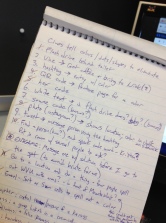
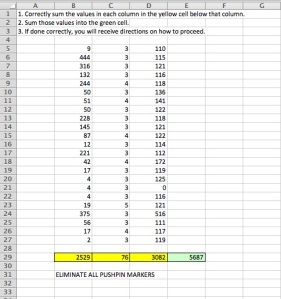
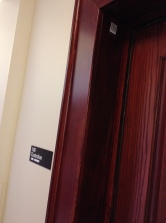

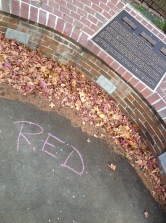
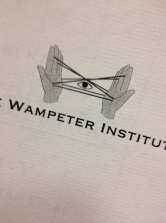
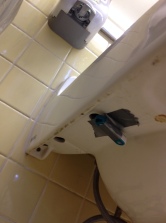
So the cat’s crade in the Wampeter logo was intentional, right?
Zak and I are both huge Vonnegut fans, and the whole thing sniffed of Cat’s Crade from the start.
Yup, after I came up with Dr. Wampeter, the whole structure fell into place. Your karass has been thrown together around a central idea (literally the Wampeter Institute) and liberally suffused with foma. An alternate storyline I was working on but couldn’t pull off involved an antagonist, who’d warn you that Wampeter wasn’t what he seemed. Because of course your karass is a false one (a granfalloon), brought together by the place you inhabit (like Hoosiers in Indiana) rather than by a true kan-kan. But that’s a story for another time.
Just be glad I didn’t make you press your feet together.
What a cool idea! I wonder if/how I could use a similar idea with my HS kids. Thx 4 sharing!